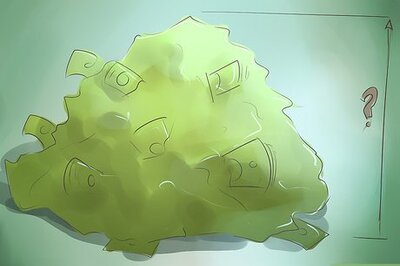
views
On January 6, 2017, Muzaffar Ahmad Naikoo alias Muzz Molvi of North Kashmir’s Sopore district was killed in an encounter near Srinagar. As his body was brought to his hometown for burial, the police was quick to claim that Naikoo was the last surviving militant of Al Badr – a militant outfit in Kashmir.
Naikoo was one of the longest surviving militants and the most wanted guerrilla in Kashmir and his killing was seen as an end to the militant outfit he was trying to revive here.
“Big achievement. We have broken the backbone of the Al Badr group that was trying to establish themselves here,” a counter-insurgency officer had told the media last year.
Sixteen months later, the outfit is again putting the counter-insurgency grid of Kashmir on tenterhooks.
In a new video address, a young masked man who identifies himself as Hamza Burhan – the Divisional Commander of Al Badr militant outfit in South Kashmir — has apologised for civilian injuries in the recent grenade attacks and called for a grand revival of the outfit.
The militant outfit went on to claim responsibility for the series of grenade attacks in Pulwama that injured at least 23 people on Monday, including eight security personnel. The outfit, through another video message, has also reportedly threatened more such attacks.
The outfit further claimed that it will recruit more boys while the current “strength is close to 100 boys”. “In some weeks, we will get another 200 boys,” a masked man in the video adds.
This comes after at least four youths from South Kashmir — Tawseef Ahmad Wani, Sameer Ahmad Seh, Nawaz Ahmad Wagay and Aijaz Ahmad Paul — recently joined the group and announced it by posting their gun-wielding pictures on social media. Senior police officials from Kashmir have also confirmed the development.
A senior police official acknowledged that Al-Badr has started its revival in Kashmir and that the counter-insurgency grid is keeping a tight vigil on their movements.
“Yes, Al-Badr has recruited some youths in South Kashmir and they are trying to recruit more people. This is a challenge for us,” a senior counter insurgency officer told News18.
Al-Badr first made its entry into Kashmir in 1998, prior to which it had fought alongside the anti-Soviet Mujahideen forces as a part of Gulbudin Hikmatyar’s Hizb-I-Islami. The group had minimal presence in Kashmir after 2003, during which most of its militants were killed by security forces.
















Comments
0 comment